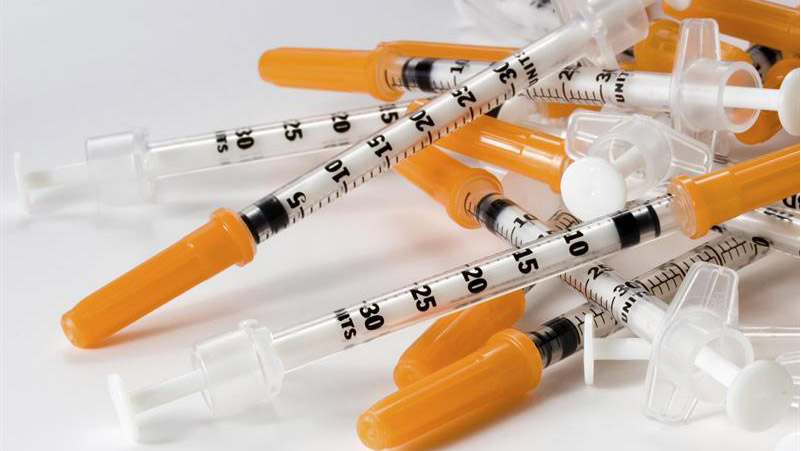
Living a life of a diabetic patient sounds painful but it is even more painful when you know a person close to you suffering from diabetes.
Yes, I know a close friend of mine suffering from the same ailment from the tender age of 11 years.
So, being an empathetic person, I feel responsible to share some of the very important facts about Insulin Syringes with you.
I hope it might help you or your close person who needs to read these words. So, here we go.
Insulin Syringes can be used to deliver insulin directly into the layer of fat below the skin, or they can inject insulin into a temporary “port” that sits on the skin.
The port, which is changed every 2-3 days, features a small flexible plastic tube that sits below the skin.
An insulin syringe has three parts: a needle, a barrel, and a plunger. The needle is short and thin and covered with a fine layer of silicone to allow it to pass through the skin easily and reduce pain. A cap covers and protects the needle before it is used.
Even though insulin is the most powerful therapeutic option available to control hyperglycemia, patients with diabetes experience various challenges.
Some examples are interference with daily living, financial constraints, the complexity of regimens, injection discomfort, and public embarrassment for initiating and adhering to insulin therapy.
I hope you keep this in mind, so note it down my friend.
Once you have chosen the correct insulin needle for self-injection, the steps are simple to draw up the solution.
Before inserting the needle, you will need to roll the vile in your hands for several seconds. It is important to remember not to shake the vile because air bubbles can give an inaccurate reading in your syringe.
After washing your hands, carefully wipe the top of the vile with an alcohol swab. Then, you may follow these simple steps to accurately fill a needle with insulin.
Don’t worry, I have something new to tell you which might be your help.
There are mainly two insulin injection syringe types available for administering insulin at home. They are:
Insulin pen syringes, as the name suggests, resemble pens due to their shape and structure.
Pen syringes are growing in popularity, and many diabetic patients nowadays use a pen syringe for their insulin needs.
These pen syringes allow a more accurate, convenient, and simple delivery than the traditional vial and syringe.
Not every diabetic person needs to administer insulin. However, those who do sometimes find sticking to an insulin schedule demanding, draining, and disruptive.
That’s why many diabetic people prefer pen syringes to make administering insulin less inconvenient and intrusive.
An insulin pen can be a bit on the expensive side. If you can’t afford it, you will have to go with the traditional vial and needle solution.
The best option available to you is using a disposable syringe.
Disposable syringes are relatively inexpensive syringes used for insulin injection and don’t require cleaning or sterilization, as they are fit for only a single use.
Okay, now this is a thing to note down when you choose a needle of a syringe.
Choosing the right needle size depends on two factors: the needle’s gauge and the needle’s length.
Don’t worry it won’t happen, I am here to alert you in advance. So, pay attention.
A syringe of the wrong size can lead to incorrect dosage, which can cause many health issues, such as hyperglycemia.
Hyperglycemia refers to a condition where your body exhibits a high blood sugar level. It usually occurs in diabetic patients when their bodies can’t produce or utilize insulin.
However, hyperglycemia can also occur due to incorrect dosage arising from a smaller-sized syringe. For instance, if your prescribed dosage is 1ml, and you’re using a 0.5ml syringe, it can lead to a deficit of dosage.
Moreover, using a syringe smaller in size also means that you’ll have to inject yourself twice, which can be very painful.
If not treated promptly, hyperglycemia can inevitably lead to diabetic ketoacidosis, or in the worst-case, diabetic coma.
In a nutshell, choosing the right syringe and needle for insulin injections is a vital process, which will ensure proper dosage, prevent pain, and help you evade severe diabetic conditions such as hyperglycemia.
Moreover, along with the right equipment, it would also help if you learned the correct technique for administering insulin.
If you’re unsure about the right equipment and technique, don’t hesitate to contact your doctor. All these factors work together for the growth of the insulin syringes market
The global insulin syringes market is estimated to rise at a market growth of 4.5% CAGR during the forecast period.